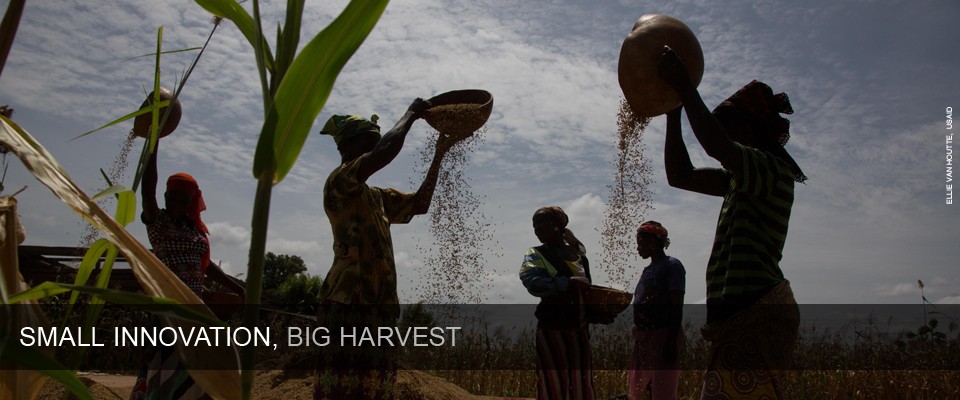Nearly 800 million people across the globe will go to bed hungry tonight, most of them smallholder farmers who depend on agriculture to make a living and feed their families. Despite an explosion in the growth of urban slums over the last decade, nearly 75 percent of poor people in developing countries live in rural areas. That’s why growth in the agriculture sector has been found, on average, to be at least twice as effective in reducing poverty as growth in other sectors.
Investing in these smallholder farmers—most of whom are women—is more important than ever. A spike in world food prices in 2008 hurt economies across the world and led to destabilizing riots in over 30 countries. In order to feed a population expected to grow to 9 billion people by 2050, the world will have to double its current food production, all while climate change increases droughts and leads to less predictable rains.
In 2009 at the G-8 Summit in L’Aquila, Italy, President Obama called on global leaders to unlock the transformative potential in agriculture to connect more people to the global economy and pave a path out of poverty. As a result, countries committed more than $22 billion in investments in agricultural development and food security. This set the foundation for Feed the Future, the U.S. Government’s global food security initiative combating hunger, poverty, and malnutrition.
In 2012 at the Camp David G-8 Summit, President Obama again led global food security efforts by launching the New Alliance for Food Security and Nutrition, a partnership designed to increase private sector investment in African agriculture. Thanks to the New Alliance, more than 70 global and local companies have committed to invest over $3.75 billion on the continent—many for the first time.
As part of these efforts, USAID is scaling up a comprehensive approach to fighting hunger and strengthening food security by:
- Investing in cutting-edge scientific and technological agricultural research to develop stronger seeds and greener fertilizers so farmers can grow more.
- Developing agricultural markets, expanding trade and using mobile phones to provide real-time prices, so farmers can sell what they grow at a profit.
- Helping farmers access capital, so they can expand their farms and buy equipment.
- Offering extension services, so farmers can learn the best techniques to grow and store their crops.
- Developing sustainable agriculture strategies, so countries can feed their populations without depleting their natural resources.
- Providing emergency food assistance, so vulnerable populations and malnourished can survive and quickly bounce back in times of crisis.
As a result of these efforts, we will:
- Reduce the prevalence of poverty and the prevalence of stunted children under five years of age by 20 percent in the areas where we work over five years;
Learn more about our agriculture and food security efforts at FeedtheFuture.gov.
Last updated: November 04, 2016






















Comment
Make a general inquiry or suggest an improvement.